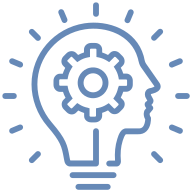In the ever-evolving corporate landscape, efficiency is key. One area where efficiency can significantly impact an organization's overall performance is Human Resources (HR). This blog post delves into the art of streamlining HR administrative tasks. We'll explore the benefits, strategies, and tools that can help HR professionals optimize their administrative processes, thereby freeing up time for more strategic initiatives.
The Importance of Streamlining HR Administrative Tasks
HR professionals often find themselves buried under a pile of administrative tasks. These tasks, while essential, can consume a significant amount of time and resources. Streamlining these tasks can help HR teams become more efficient and effective.
Streamlining HR administrative tasks can lead to several benefits. It can reduce errors, improve productivity, and enhance employee satisfaction. By automating repetitive tasks, HR professionals can focus on more strategic initiatives, such as talent development and organizational culture.
Moreover, streamlining HR tasks can lead to cost savings. By reducing the time spent on administrative tasks, organizations can lower their operational costs. This can result in a more efficient use of resources and a higher return on investment.
Strategies for Streamlining HR Administrative Tasks
There are several strategies that HR teams can employ to streamline their administrative tasks. One of these is process automation. By automating repetitive tasks, HR teams can reduce the time and effort required to complete these tasks.
Another strategy is to implement a centralized HR system. A centralized system can help HR teams manage all their tasks in one place, thereby reducing the need for multiple systems and processes. This can lead to improved efficiency and productivity.
Furthermore, HR teams can leverage data analytics to streamline their tasks. By analyzing HR data, teams can identify areas of inefficiency and implement strategies to improve these areas. This can lead to improved decision-making and a more efficient HR function.
Tools for Streamlining HR Administrative Tasks
There are numerous tools available that can help HR teams streamline their administrative tasks. These tools can automate tasks, centralize data, and provide analytics to help HR teams make informed decisions.
One such tool is HR software. HR software can automate tasks such as payroll processing, benefits administration, and employee onboarding. This can significantly reduce the time and effort required to complete these tasks.
Another tool is a Human Resource Information System (HRIS). An HRIS can centralize all HR data in one place, making it easier for HR teams to manage their tasks. It can also provide analytics to help HR teams identify areas of inefficiency and implement strategies to improve these areas.
Challenges in Streamlining HR Administrative Tasks
While there are numerous benefits to streamlining HR administrative tasks, there can also be challenges. One of these is resistance to change. Employees may be resistant to new processes or tools, which can hinder the streamlining process.
Another challenge is the cost of implementing new tools or processes. While these can lead to long-term cost savings, the initial investment can be significant. Organizations must carefully consider their budget and the potential return on investment before implementing new tools or processes.
Moreover, there can be challenges related to data security and privacy. When implementing new tools or processes, organizations must ensure that they are compliant with data protection regulations. This can require a significant amount of time and resources.
Overcoming Challenges in Streamlining HR Administrative Tasks
Despite the challenges, there are ways to overcome them. To overcome resistance to change, organizations can provide training and support to help employees adapt to new processes or tools. They can also communicate the benefits of these changes to help employees understand their value.
To manage the cost of implementing new tools or processes, organizations can start small. They can implement one tool or process at a time, and gradually expand as they see the benefits. They can also look for cost-effective solutions that provide a high return on investment.
To address data security and privacy concerns, organizations can work with reputable vendors who comply with data protection regulations. They can also implement robust data security measures to protect their data.
The Future of Streamlining HR Administrative Tasks
The future of streamlining HR administrative tasks looks promising. With advancements in technology, there are likely to be even more tools and strategies available to help HR teams streamline their tasks.
One trend to watch is the use of artificial intelligence (AI) in HR. AI can automate tasks, analyze data, and provide insights to help HR teams make informed decisions. This can lead to even greater efficiency and productivity.
Another trend is the use of cloud-based HR systems. These systems can centralize data, provide analytics, and automate tasks, all in a secure and accessible environment. This can make it easier for HR teams to manage their tasks and make informed decisions.
Streamlining HR Administrative Tasks: The Path Forward
Streamlining HR administrative tasks is not just a trend, but a necessity in today's fast-paced corporate world. By implementing strategies and tools to streamline these tasks, HR teams can improve their efficiency, productivity, and decision-making. While there may be challenges along the way, the benefits far outweigh the drawbacks. As we look to the future, the possibilities for streamlining HR administrative tasks are endless, promising a more efficient and effective HR function.

